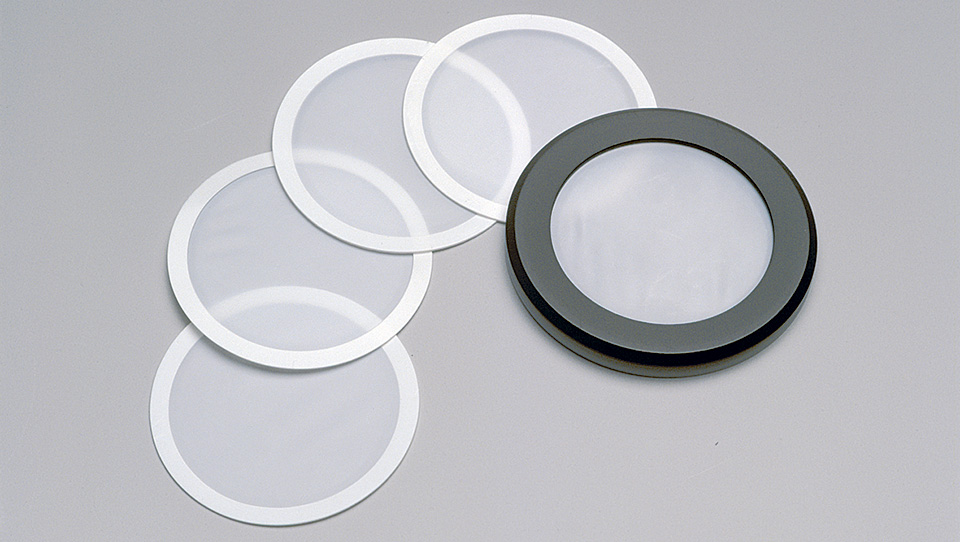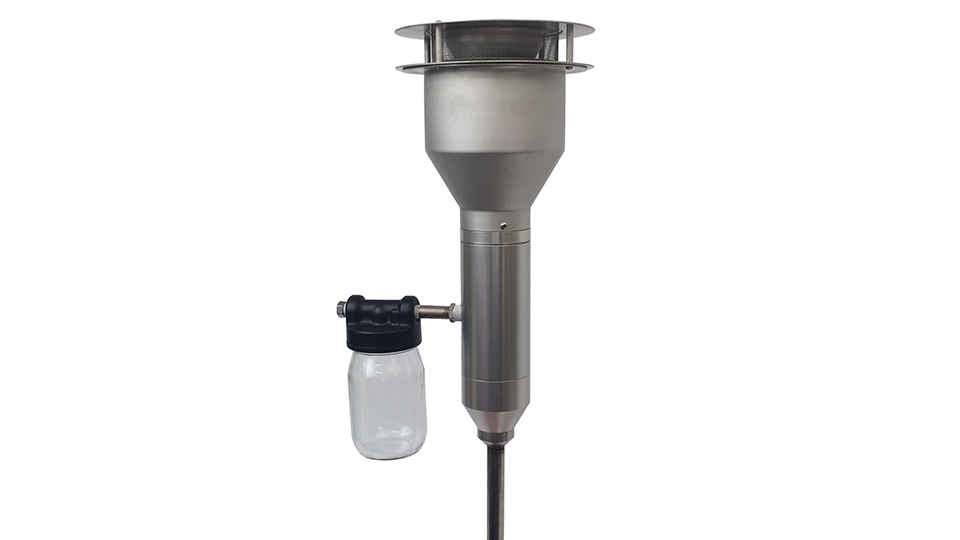Monitoring particle concentrations using filters
There are several methods for monitoring levels of particles in the ambient air. The reference method is based on collecting particles on a filter. An accurately measured airflow is allowed to pass through an equally accurately specified filter during a certain sampling period. The average concentration of particles during the period is then given by the weight of the particles caught on the filter divided by the total volume that passed.
HOW DOES THE BETA ABSORPTION TECHNOLOGY WORK?
When beta rays (electrons) pass through matter, there is always some absorption, the more matter, the more absorption. This follows the same Beer-Lambert absorption law as the optical absorption on which the DOAS principle is based. One way to determine the weight of the particles on a filter is therefore to let beta radiation pass through the filter. The amount of beta radiation is measured with a Geiger counter.
The filter itself will contribute to the measured absorption. Before the filter is exposed to the air stream, a so-called blank measurement of the absorption in the clean filter is therefore made. After the exposure, a new measurement is made where the additional absorption comes from the particles accumulated on the filter. The more additional absorption, the thicker the layer of particles on the filter.
Using a calibration function that also includes the size of the exposed filter surface, the total weight of particles on the filter can be calculated. The concentration is then determined by dividing by the total air volume that has passed the filter.

PRACTICAL PERFORMANCE
The combination of a beta source and a Geiger counter can thus be used to weigh the particles on a filter. In order to carry out automated measurements over a longer period of time where several filters are used, mechanical solutions are also needed to bring filter material into and out of the air stream. This can for example be a carousel-like structure that repeatedly retrieves a clean filter from a magazine, places it in the air stream, and after exposure leaves the filter in another magazine. Absorption measurements also take place in between.
A possible source of error is that both the filter and the particles not only absorb beta radiation but can also emit some radiation. However, this can be handled by measuring such radiation before and after exposure with the primary beta source blocked, so-called natural measurement.
Usually, particle concentrations are measured in fractions, for example PM2.5 for particles with an average diameter up to 2.5 µm. In filter-based measurements, the selection of particles takes place in a standardized air intake that only allows the sought-after particle fraction to pass through for collection on the filter.

BLOGS ABOUT PARTICLE monitoring
Read our blog posts about particle monitoring and air quality monitoring.
Finding Air Pollution Solutions by Tracking Particulates and Gases
What is the difference between a PM2.5 Monitor and a PM10 Monitor?

